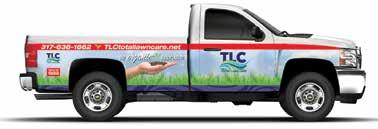
2 minute read
Spring Lawn Care Essentials
April is upon us and there are certain things we want to do with the lawn in April.
CRABGRASS CONTROL If you have not gotten your crabgrass controls down, this needs to be done. Once this window is missed it is difficult to get on top of it. It was a pretty mild winter and as of this writing March has been relatively warm. The soil temperatures are increasing fairly fast. Each crabgrass plant can produce 150,000 seeds. And when one kills the plant it is brown, unsightly and the carcass of the plant remains for several weeks. Along edges, park strips with debris in them, and areas that get weed eated too short or driven over are susceptible to crabgrass.
MOWING The lawn is coming out of its winter sleep and mowing will begin to occur. Sharpen your blades. This will help reduce shredding the turf and keep unwanted pathogens out of the turf. This helps keep the turf plant healthy and reduces diseases. As the lawn comes out of dormancy the majority of the energy will be used to create cell elongation and the turf will grow quickly.
BROADLEAF WEED CONTROL & FERTILIZER Broadleaf weeds are beginning to show up. Dandelions, clover, plantain, and other weeds begin to germinate and they are controlled with post emergent weed controls. If you use a granular product purchased at a store, these products generally need to be applied when the turfgrass is moist. At this time, a high amount of nitrogen is not necessarily required. The plant will have its own energy and the soil will become alive with millions of reactions releasing nutrients.
SEEDING This is a time I consider seeding in shady areas only. The tree leaves are not quite out and the ground is clean and the seed has a good chance to germinate in the spring. I do not like to seed in sunny areas as there are a few problems with spring seeding lawns.
As we have cool season grasses here, the new plants will be juvenile and much of the energy goes to the blade in the spring. I prefer to seed sunny areas in the early fall/late summer. The plant will germinate and, as fall approaches, the physiology of the plant will begin to send energy to the root system which will then develop over winter and in the early spring allowing for a mature plant in the summer which can survive the summer.
organic approach
Our Organic Approac h reduces the amount of chemicals going into the environment
Independently owned and operated since 1989
• Fertilization & Weed Control • Perimeter Pest Control A Responsible, Professional approach to a healthy lawn Visit our website for additional information

317.638.1862 tlctotallawncare.net Sign up now and get 10% off first Applic ation fig











